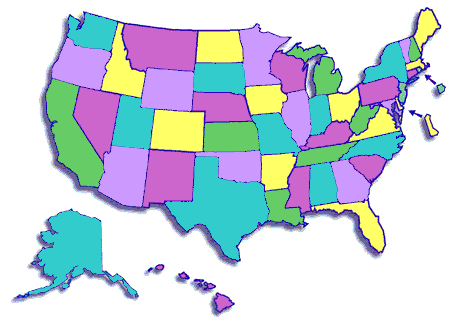Cards In This Set
| Front | Back |
 1st Amendment |
This amendment spells out the many freedoms we have such as Freedom of speech, Freedom of press, No established religion, Right to peaceably assemble, And freedom to petition the government for redress of grievences. It all means pretty much exactly what it says.
|
 2nd Amendment |
Right to bear arms. The meaning of this amendment is debated. Some believes it means that we should have a militia. Others think it refers to an individuals right to bear arms.
|
 3rd Amendment |
No soldier, shall, in times of peace be quartered in any house without the consent of the owner. This comes from an old british military tradition in which their soliders would come into the colonists houses and stay there whenever they needed somewhere to stay. The colonists did not like this.
|
 4th Amendment |
Rights of the People. This admendment has to do with searches and seizures. All search warrants and arrest warrants can only be judicially sanctioned and must be based on probable cause. A warrant must specifically state what or who is being searched. No search may be unreasonable.
|
 5th Amendment |
Self-incrimination. No person will be held accountable for any crime (capital or infamous) without a grand jury, except for those in the armed forces in a time of war or public danger. No one can be tried for the same crime more than once nor will they ever be forced to be a witness against themselves. Cannot be deprived of life, liberty or property without due proccess of law. Private property cannot be taken for public use without fair payment.
|
 6th Amendment |
In all trials, the accused shall have to the right to a speedy and public trial, by an unbiased jury in the state and district the crime was committed. The accused has the right to be informed of the reason why they are being accused, and for what. they also have the right to confront the witnesses against them and have witnesses in his favor. The accused also has the right for Assistance of Counsel for his defense, which is like a defense attorney.
|
 7th Amendment |
This is about civil, not criminal trials. It says that if any accused person stands to lose money ($20), they are granted the right to demand a trial by jury. It also means that once this type of case is decided by a trial, it cannot be changed unless the rules of common laws are upheld.
|
 8th Amendment |
No bail or fine shall be set too high for the accused to pay. Also, no cruel or unusual punishment should be inflicted. Cruel and unusual punishment is not easily defined, as it changes with the generations.
|
 9th Amendment |
This amendment is basically saying that just because a right is not listed in the constitution does not mean that it does not exist.
|
 10th Amendment |
This amendment says that any power not given to the federal government is reserved to the state or the people.
|
 Marbury v. Madison |
When President Adams was defeated in the 1800 elections, he appointed a lot of Federalists to the federal courts. James Madison, who was the new secretary of state, would not deliver the commissions. An appointee, William Marbury asked the Supreme Court to deliever the commission. The court denied his request because the Judiciary Act he based his case on was found to be unconstitutional. This case established judicial review, or the power of the Supreme Court to decide the constituionality of a federal law.
|
 McCulloch v. Maryland |
A law in Maryland required federal banks to use a special paper to print their money one, whcih imposed a tax. James McCullch, a cashier in a Baltimore branch, would not use the paper. He would not use it because he believed that a state government had no right to tax the federal government. The Supreme Court agreed with him, stating that the law was unconstitutional.
|
 Gibbons v. Ogden |
This Supreme Court case involved the re-examination of the Congress's power to regulate interstate commerence. Aaron Ogden had a liscense for his New York ferry to operate steamboats to and from New York. He believed that Thomas Gibbon's federal coasting license didn't include landing rights. The Court concluded that New Yorks regulation laws were invalid and held that federal regulations took precedence because of the Supremacy clause. This ended up allowing the Federal government more power to regulate interstate business.
|
 Plessy v. Ferguson |
A Louisiana law require segregated seating for white and African American people on the public railroads. Herman Plessy believed that his "equal protection of the law" rights had been violated. The Court ruled that as long as the facilities were equal, it was allowed. They interperted the 14th Amendment as only meaning Negros were politically equal, thus "Seperate but Equal" was established.
|
 Brown v. The Board of Education |
This Supreme Court decision was the case that most dramatically changed life in the United States. It was about a 10-year-old girl who lived in Topeka named Linda Brown. She was not permitted to attend a school in her own neighborhood because it was segregated and she was African American. The Court heard both arguments, trying to decide if the claus of "Seperate but Equal" had been violated The Court finally decided that the claus had no place in public education and it denied the equal protection of laws.
|



